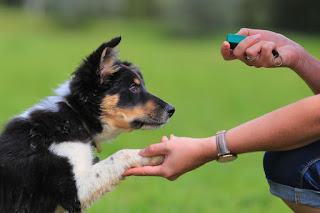How to train your dog to be your running partner?
Running with your dog is a fun way to spend time together and helps keep both of you in tip-top shape. Plus, having a running buddy can be an important source of motivation. To train your dog to be the perfect running companion, check out the following tips.
The Right Breed and Age
Before you start your training program, make sure your dog is suited to long-distance running. For example, brachycephalic dogs (those with short muzzles), like Bulldogs or Pugs, should only sprint for short distances. Also, be aware that running is not safe for puppies, as their bones are still growing. For most breeds, wait until the dog is about one-and-one-half-years old.
Even within breeds, every dog has his own personality, and some will take to running more than others. Consider your dog’s temperament, research his breed, and take him to the veterinarian for a physical checkup to ensure that this is a safe activity for him.
bikejoring equipment
http://www.bigdogsport.com/must-have-bikejoring-equipment-for-beginners
Walk Before You Run
Your dog should master loose-leash walking before you start training him to run beside you. A canine companion that pulls on the leash is frustrating when walking, but downright dangerous at faster speeds. Remember that the environment is full of rewards, like squirrels and interesting smells. So, if you want your dog to stay near you, with the leash hanging in a J shape, you need to be equally rewarding. Use treats, toys, and praise to reinforce your dog for keeping the leash slack.
Keeping your dog on one side of you will be essential when you start running together. If he runs in front of you or weaves from side-to-side, he can trip you or tangle your legs in the leash. It doesn’t matter which side you choose, left or right, but pick one and stick with it. Start training at a walking pace and keep reward placement in mind. Always give your dog his treats in the position you want to reinforce, so if you want him on your left, only offer treats at your left leg. Once your dog has mastered one side, you can train the other with a different cue.
service dog counterbalance harness
http://www.bigdogsport.com/service-dog-mobility-harness-a-must-have-in-dog-training
Speed Cues
Now that your dog is politely walking at your side, it’s time to speed things up. When you’re out for a walk, it’s handy to have a cue, such as “let’s go,” that tells your dog it’s time to move on and get walking. A different cue, like “get running” or “move it,” can be used to tell your dog it’s time to pick up the pace. The more information you can give your dog about what you expect, the better he will be at responding appropriately.
To teach the running cue, intersperse short bursts of jogging or running with your normal walking pace. Simply give the cue immediately before you increase your speed, and then reward your dog when he hurries to catch up. In the same way, you can teach a cue such as “whoa” to slow your dog down.
attack dog training suit
http://www.bigdogsport.com/dog-attack-protective-clothing-a-must-have-for-dog-training
Building Endurance
Now that your dog knows to stay at your side and match your pace, it’s time to get his body in shape. Just as humans need to build strength and endurance slowly, so does your dog. Start by adding small stretches of running into your walks. Then, on each subsequent walk, gradually increase the portion of your time spent running and decrease the portion spent walking. After several weeks, your dog will have adapted to running long distances.
sport dog contain and train
http://www.bigdogsport.com/sportdog-contain-and-train-raising-smart-dogs
Tips for a Safe and Enjoyable Run
Your dog is finally trained and conditioned to be your running companion. But to ensure that he’s safe and enjoys running with you, keep the following tips in mind:
• Warm up your dog before you run and cool him down when you’re finished by walking for several minutes.
• Be aware of weather conditions. Dogs can’t handle heat and humidity as well as humans can.
• Carry water on your walks and offer it to your dog regularly.
• Give your dog frequent breaks, so he can recharge, go to the bathroom, and enjoy his surroundings.
• Only allow your dog to run off-leash where it’s safe and legal, and only if he has a reliable recall amid distractions.
• Watch your dog for signs that he’s had enough, such as excessive panting or lagging behind you. Dogs may run to please their owner, even when they want to stop.

Comments
Post a Comment